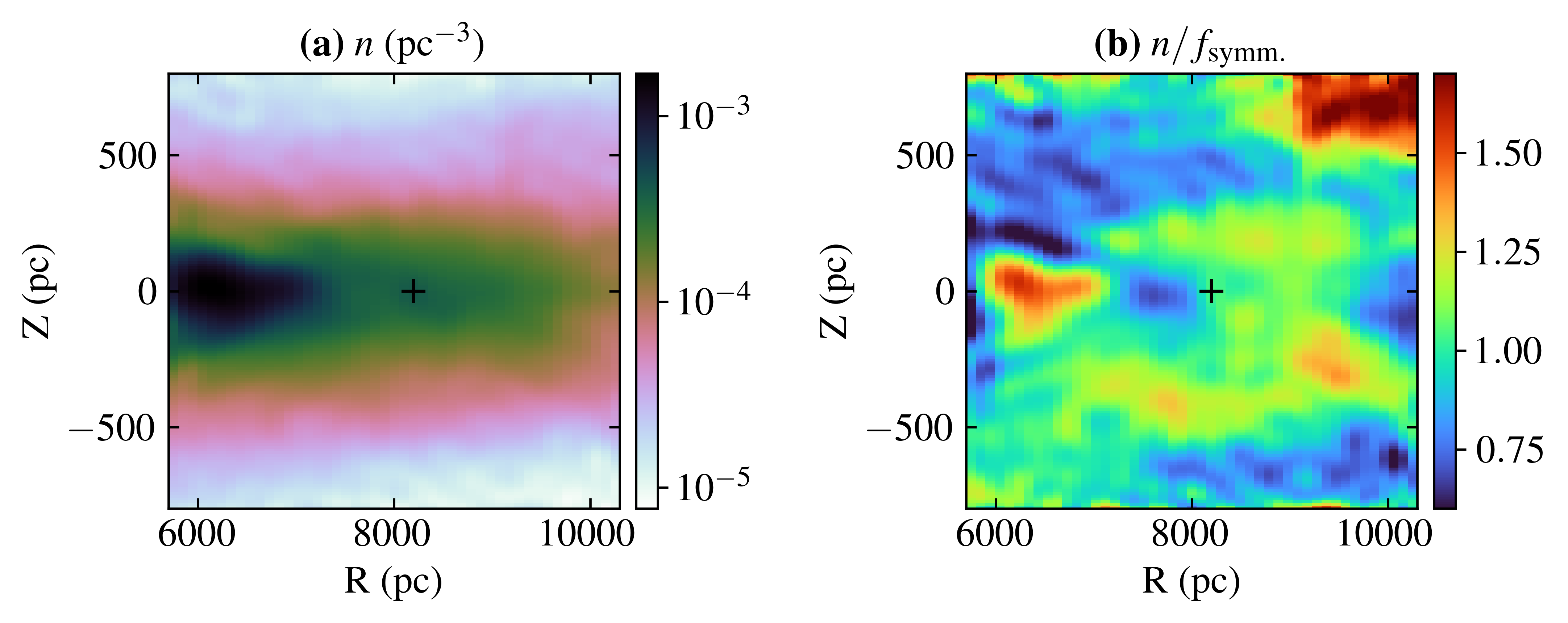Axel Widmark
Physicist & Astronomer
axel.widmark@fysik.su.se

Physicist & Astronomer
axel.widmark@fysik.su.se

I hold a Marie Skłodowska‐Curie Actions (MSCA) Global Fellowship, with Columbia University and Stockholm University as host institutes. I received my PhD from Stockholm University in 2020, and spent three years at Copenhagen University with a DARK-Carlsberg Fellowship. My research is mainly focused on stellar dynamics as a probe of dark matter, but some of my work is more oriented towards particle physics. See below for a few highlighted projects.
With collaborators (C.F.P. Laporte, P.F. de Salas, G. Monari, J.A.S. Hunt),
we have developed, tested, and applied a completely novel method
for weighing the Milky Way disk, using the shape of the recently discovered
phase-space spiral. The phase-space spiral lives in the (Z,W) phase-space plane
of vertical position and vertical velocity
(i.e. in the direction perpendicular to the Galactic disk plane).
The image below shows the phase-space spiral of the Solar neighbourhood,
using data from ESA's Gaia survey. Panel (a) shows
the stellar number density in the (Z,W) phase-space plane.
Panel (b) shows the ratio of this stellar number density with respect to a
fitted smooth and symmetric background distribution.

Our method utilises the fact that the precise shape of the spiral is intimately
connected with the gravitational potential that it inhabits.
This novel method is complementary to and highly competetive with traditional
equilibrium-based methods for weighing the Galactic disk (e.g. Jeans modelling).
For example, we set world-leading constraints to the surface density of a thin dark disk.
For further details, see our series of papers
(Paper I,
Paper II,
Paper III,
Paper IV).
In collaboration with Prof. Lawrence M. Widrow and post-doc Aneesh Naik, we applied Gaussian processes
to the stellar number density field of the Milky Way disk and were able to map density perturbations out
to a few kiloparsecs. We discovered new time-varying phase-space structures in the stellar disk,
most notably a traveling breathing mode seemingly related to the Local Spiral Arm.
The figure below is an excerpt of our paper, showing
the stellar number density projected on the (R,Z)-plane (i.e. Galactocentric radius
and height). Panel (a) shows the total stellar number density for stars with G-band absolute magnitudes
in range 2—3. Panel (b) shows the ratio between the stellar number density and a fitted smooth and
symmetric background distribution, highlighting perturbations
(e.g. projections of the phase-space spiral described above, see
the paper for details).
The black plus sign marks the position of the Sun.

Together with Michael Korsmeier and Tim Linden of Stockholm University, we have developed an
entirely novel methodology
for constraining the amount of cold gas
in Solar neighbourhood using gamma-rays, which are produced when the gas is hit
by cosmic rays.
We produce competetive constraints on the dust-to-gas conversion factor and the amount
of CO-dark molecular hydrogen, which is otherwise very difficult to observe.
The image below demonstrates our method and fitting procedure. Our model consists of
different gas tracers, point sources, and smooth maps, meaning an isotropic background and
gamma-rays from inverse Compton scattering.

Find my CV here. This includes a complete
list of scientific publications (last updated 18 Oct 2022).
You can also find my publications on arXiv or
on NASA/ADS.
My ORCID id is 0000-0001-5686-3743.
In my spare time I like to paint, mainly with oils. Here are a few of my paintings.
I also love hiking. Below is a photo of me and my friend Petter at Rapa Valley, in the outskirts of Sarek, Sweden.
I like to do outreach! During my PhD studies at Stockholm University I met with high school classes to talk about my research and physics in general. At the Niels Bohr Institute in Copenhagen, I have participated in "Bestil en forsker". Feel free to contact me about outreach activites.